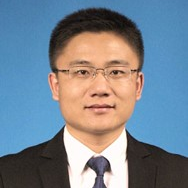Advanced Marine Energy Harvesting Technologies
A special issue of Journal of Marine Science and Engineering (ISSN 2077-1312). This special issue belongs to the section "Marine Energy".
Deadline for manuscript submissions: closed (31 August 2023) | Viewed by 21242
Special Issue Editors
Interests: triboelectric nanogenerator
Interests: self-powered sensor; underwater sensor; energy harvesting technology; triboelectric nanogenerator
Special Issues, Collections and Topics in MDPI journals
Special Issue Information
Dear Colleagues,
The harvesting of marine energy (e.g., wind, wave, current and thermal) is a sustainable and convenient way to generate and store power from the oceans. The past several decades have seen rapid progress in marine energy harvesting technologies. These technologies could help to overcome the high entropy of marine energy and greatly promote the efficiencies of energy capture and power take-off. Combined with the advances in power management and energy storage, marine energy could be a promising sector in the grid, and have the potential to represent the power foundation of self-powered marine systems and distributed marine systems. This Special Issue invites original research and review articles on the broad aspects of advanced harvesting technologies for marine energy. Topics of interest include, but are not limited to, the following:
- Wave energy and energy capture;
- Offshore wind energy and floating wind turbines;
- Current and tidal energy;
- Linear direct generators;
- Triboelectric nanogenerators;
- Self-powered systems and distributed systems;
- Power management and energy storage.
Dr. Hao Wang
Prof. Dr. Minyi Xu
Prof. Dr. Xinxiang Pan
Guest Editors
Manuscript Submission Information
Manuscripts should be submitted online at www.mdpi.com by registering and logging in to this website. Once you are registered, click here to go to the submission form. Manuscripts can be submitted until the deadline. All submissions that pass pre-check are peer-reviewed. Accepted papers will be published continuously in the journal (as soon as accepted) and will be listed together on the special issue website. Research articles, review articles as well as short communications are invited. For planned papers, a title and short abstract (about 100 words) can be sent to the Editorial Office for announcement on this website.
Submitted manuscripts should not have been published previously, nor be under consideration for publication elsewhere (except conference proceedings papers). All manuscripts are thoroughly refereed through a single-blind peer-review process. A guide for authors and other relevant information for submission of manuscripts is available on the Instructions for Authors page. Journal of Marine Science and Engineering is an international peer-reviewed open access monthly journal published by MDPI.
Please visit the Instructions for Authors page before submitting a manuscript. The Article Processing Charge (APC) for publication in this open access journal is 2600 CHF (Swiss Francs). Submitted papers should be well formatted and use good English. Authors may use MDPI's English editing service prior to publication or during author revisions.
Keywords
- wave energy
- offshore wind energy
- current energy
- energy capture
- linear direct generators
- triboelectric nanogenerators
- floating wind turbines
- self-powered systems
- distributed systems
- power management
- energy storage







